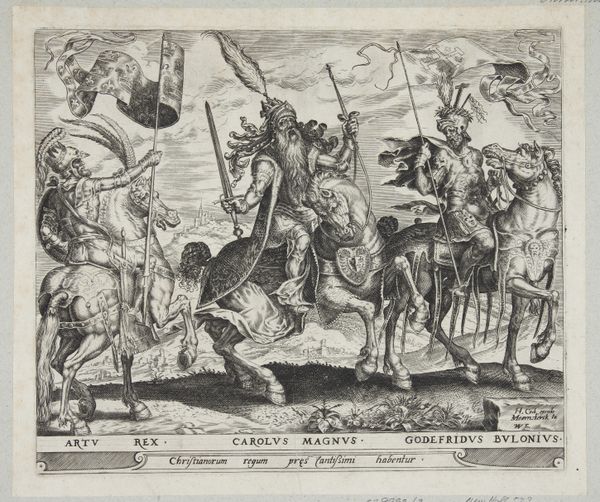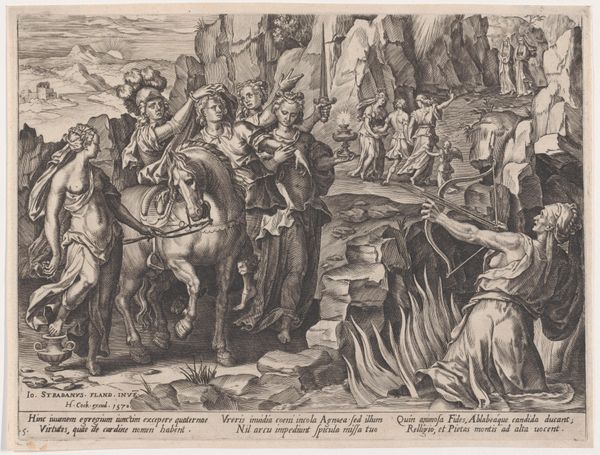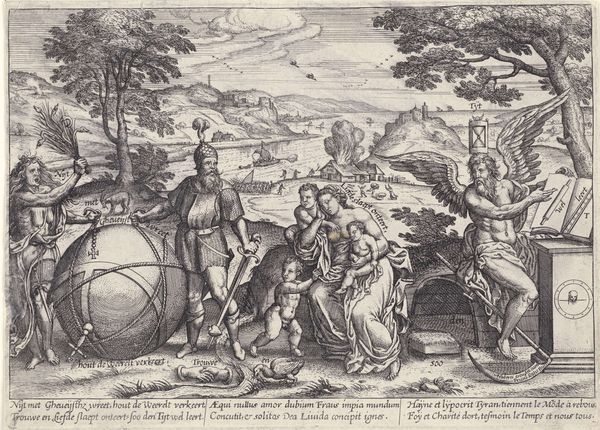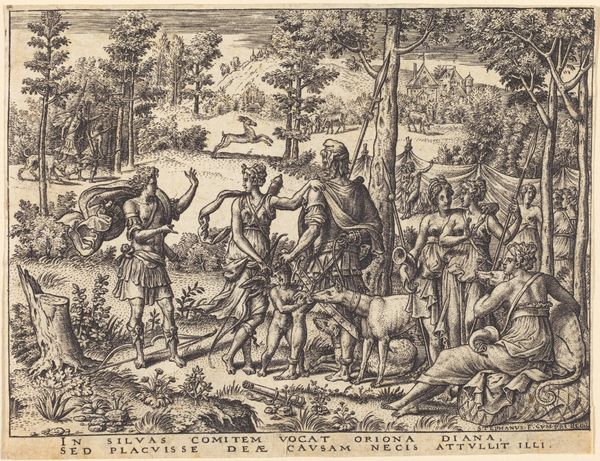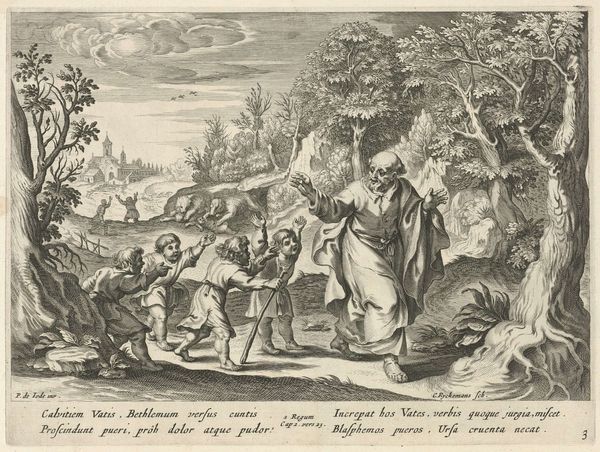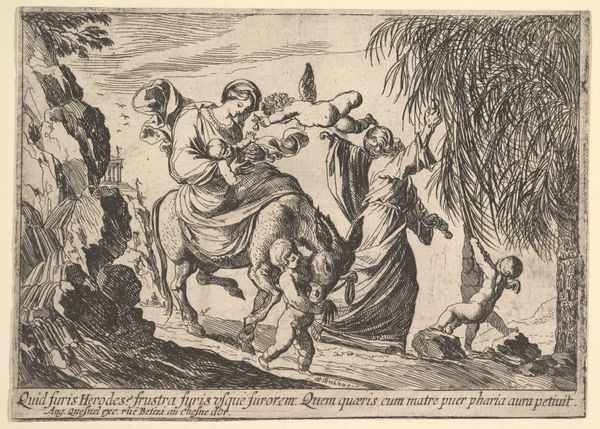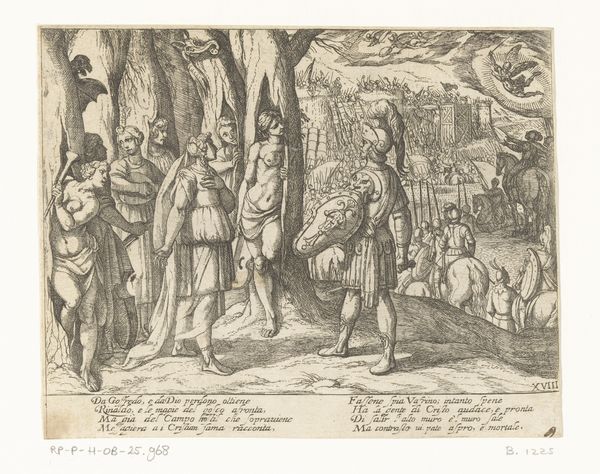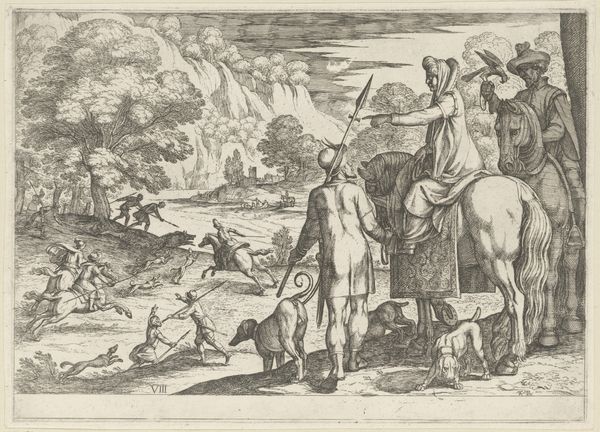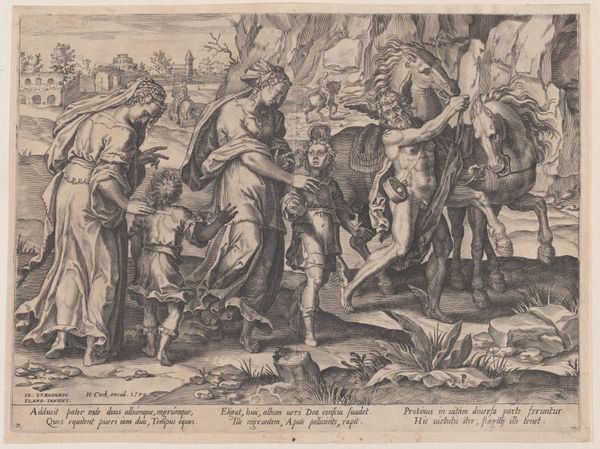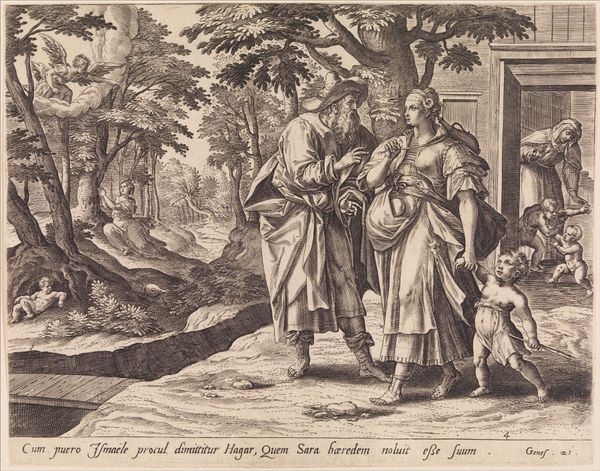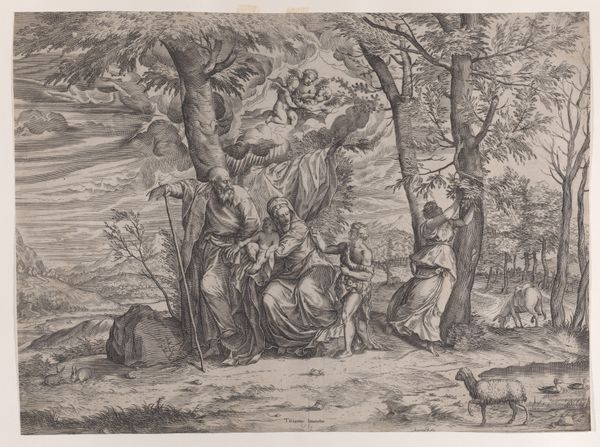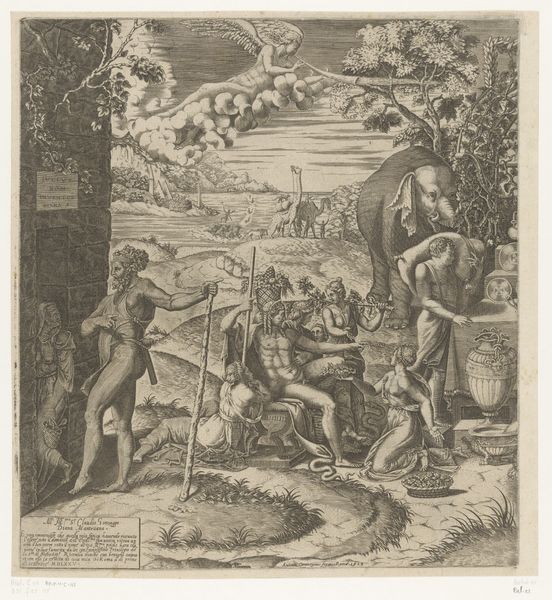
Thou shalt not covet thy neighbour's house, nor his servants, nor his ox, nor his ass 1564 - 1567
0:00
0:00
print, engraving
#
narrative-art
# print
#
figuration
#
genre-painting
#
history-painting
#
northern-renaissance
#
engraving
Dimensions: 205 mm (height) x 242 mm (width) (bladmaal)
Curator: So, this engraving, "Thou shalt not covet thy neighbour's house, nor his servants, nor his ox, nor his ass," by Harmen Jansz. Muller, likely produced between 1564 and 1567, illustrates one of the Ten Commandments. It’s a busy piece, a real slice of life from the Northern Renaissance. Editor: My first impression? A little overwhelming. So much detail packed into such a small space. It feels very moralizing, almost didactic. Everyone seems so busy! Like a play being acted out with all the props visible in one image. Curator: Precisely! The commandment itself warns against desiring what belongs to your neighbor: his house, servants, animals... Muller visualizes this desire by showing people actively engaged in their daily lives, each possessing something someone else might want. Look at the way the engraver renders textures. Editor: Yes, and the landscape behind—it's as if the engraver aimed to fit the whole world into a single scene, each element laden with symbolism. Is that shepherd and flock symbolic of leadership or God's people perhaps? I see how deeply embedded everyday objects were in communicating spiritual principles. The tent is interesting - almost mosque-like. Curator: The tent perhaps hints at the wandering, nomadic nature of early Israelites, but your instinct about embedding daily life with religious messages is correct. Muller uses ordinary scenes to ground abstract commandments. Note that there is Latin scripture in the front... Editor: A conscious appeal to educated audiences? The Northern Renaissance loved blending classical learning with Christian teaching, didn’t it? But also I keep noticing this dog running ahead. I know, I know, animals rarely are there "just because". Is he leading or being led? Maybe he is the embodiment of the coveting drive? Curator: Ah, the running dog! An interesting reading that links desire with our animal drives, perhaps? Maybe a darker, less flattering element in humans? Muller presents the commandment as applicable to all aspects of life—material, social, even emotional. Editor: Absolutely. He transforms an abstract prohibition into a vibrant and accessible image. It makes me wonder, in our own era of abundance, how such an image would be depicted? I think its complexity shows that understanding and living up to ideals in this era would not always be straightforward. Curator: An excellent point to leave our listeners to contemplate the complex challenge the artwork sets up - and, what, if anything, has changed centuries later? Editor: Indeed! Art holds a mirror to our souls. Hopefully, this brief reflection makes viewers think...and act.
Comments
No comments
Be the first to comment and join the conversation on the ultimate creative platform.


